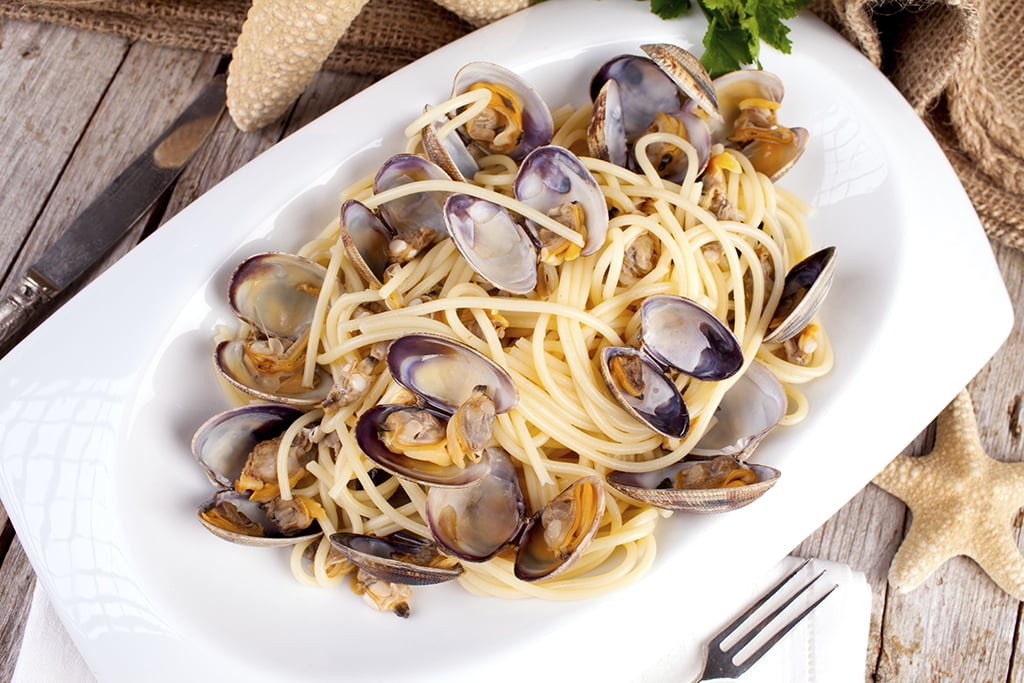Ingredients
- 3 dozen littleneck or cherrystone clams, scrubbed
- 1/3 cup olive oil
- 2 cloves garlic, minced
- 3/4 cup dry white wine
- 1/4 cup chopped fresh flat-leaf parsley
- Pinch dried red-pepper flakes
- 1/2 teaspoon salt, or to taste
- 3/4 pound angel hair
- 3 tablespoons butter
Instructions
Discard any clams that are broken or do not clamp shut when tapped. In a large saucepan, heat the oil and garlic cloves over moderate heat. Cook just until the garlic begins to sizzle. Stir in the clams, white wine, parsley, red-pepper flakes and the salt. Cover and bring to a boil over high heat. Cook, shaking the pan occasionally, just until the clams begin to open, about 3 minutes. Remove the open clams and continue to cook, uncovering the pot as necessary to remove the clams as soon as their shells open. Discard any clams that do not open. Remove 4 clams for garnish. When cool enough to handle, remove the remaining clams from their shells, holding them over the pan to catch all the juices. Cut the shelled clams in half. Pour the broth through a sieve lined with a paper towel into a large pot. In a large pot of boiling, salted water, cook the angel-hair pasta until just done, about 3 minutes. Drain. Add the butter to the reserved clam-cooking liquid. Bring to a boil over moderate heat. Add the angel-hair pasta and simmer, stirring, for two minutes. Taste and add salt if needed. Remove the pot from the heat, add the clams and toss. Serve, garnished with the 4 reserved clams.
Cleaning Fresh Clams
Clam shells harbor lots of sand and should always be scrubbed. First discard any that are broken or that don’t close when tapped. Clams can also have some sand inside the shell. If they’re to be cooked in liquid that can be strained, as in this recipe, preliminary soaking to purge them of sand is not necessary. If, however, the clams are to be cooked directly in the sauce, they should be soaked first in salted water (one handful salt per each quart of water). Add the clams and let soak for one to two hours. They’ll open slightly and release their sand.
Wine Pairing
Choose a light, crisp and refreshing white wine from a coastal area in Italy, such as Verdicchio from the Marches region or Pinot Bianco from the Veneto region. Look for a young version of either of these wines.
